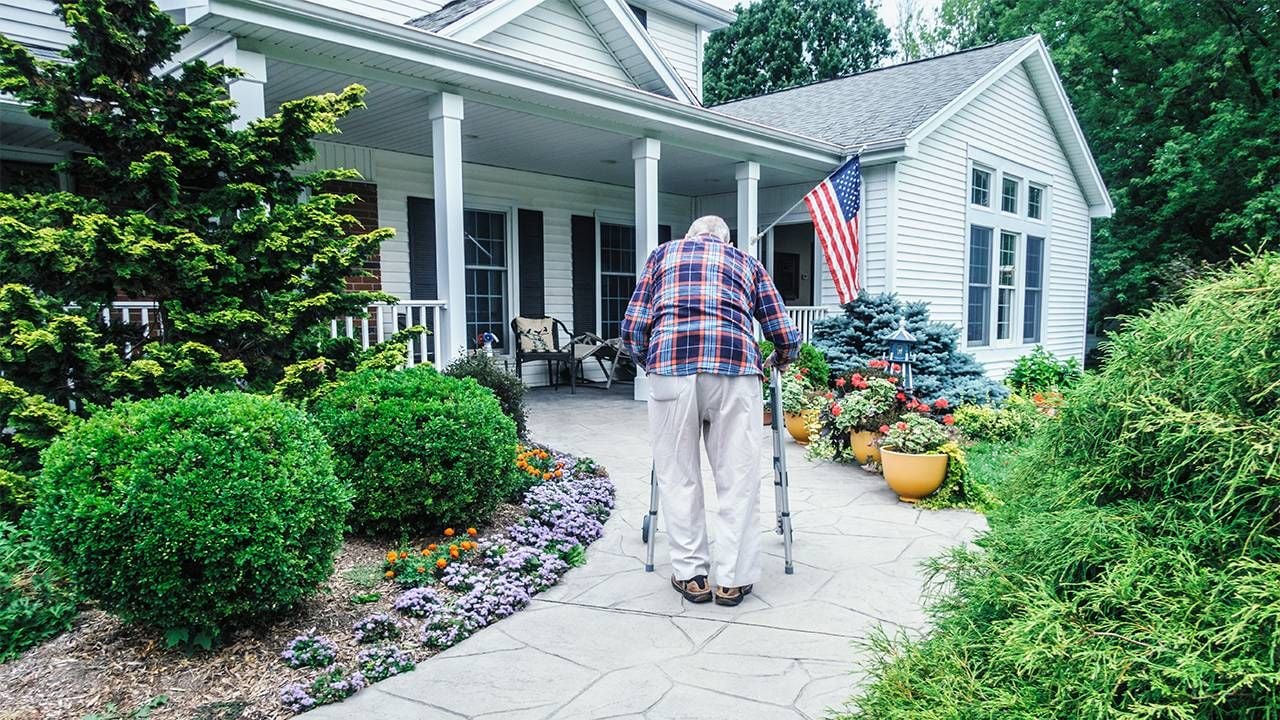 Is aging in place a smart strategy? Here we go again. In a brand new and similarly rosy article in the Wall Street Journal, more of the same mediocre advice is offered about how to prepare. Have a frank talk with family members. Maybe do some home modifications (those rickety stairs? Or a $20,000+ elevator), or address that lengthy distance from a supermarket? Maybe the 3-4% of older adults with long-term care insurance will pay for home care that averages $24,000/month for round-the-clock care. Hmmm. Or voice-activated devices, says an AARP exec, will be helpful for his long-distance aging parents. Says a family, we want Mom to stay in her house, and so we pay $4000 per month for care, because staying in her house is keeping her alive. Really.
Is aging in place a smart strategy? Here we go again. In a brand new and similarly rosy article in the Wall Street Journal, more of the same mediocre advice is offered about how to prepare. Have a frank talk with family members. Maybe do some home modifications (those rickety stairs? Or a $20,000+ elevator), or address that lengthy distance from a supermarket? Maybe the 3-4% of older adults with long-term care insurance will pay for home care that averages $24,000/month for round-the-clock care. Hmmm. Or voice-activated devices, says an AARP exec, will be helpful for his long-distance aging parents. Says a family, we want Mom to stay in her house, and so we pay $4000 per month for care, because staying in her house is keeping her alive. Really.
Aging in place past the point of rational expectations is not good planning -- it's neglect. Perhaps a parent is not in great shape, not a regular in the gym or worse, has had previous knee or hip fractures. Perhaps there are early signs of memory loss? Perhaps the parent isn’t comfortable driving. The family must patch in variations of their own help, ever-more-scarce home care aides, drivers, expensive home modifications and more. This plan is an irrational obsession that may endanger a family member – one fourth of older adults fall each year. Does the family discuss fall risk – 319,000 falls result in hip fractures, and that falls are the most common cause of traumatic brain injury?
So how does the senior living industry confront this obsession? They don’t. Yet the mean assisted living move-in age of 85 reflects the head-in-the-sand approach to confronting the media-fueled aging in place obsession. Instead of help, the senior living communities patiently wait for families to be in crisis, maybe hosting an event here to showcase their nice settings. But Mom is a widow now, gets lost driving, no longer cooks for herself and doesn’t do her laundry regularly. So the family rallies together too late, does a fast search for the few available places near one or the other of them – and so she moves, a trauma for her and for them. How sad that neither the older adult or family anticipated this move. And it is a shame that the assisted living industry does not provide anticipatory marketing that compares benefits/costs (simple two-column chart) between aging at home alone or with a care worker, versus in a community that has shared meals, activities, laundry, outings and a social life.
Is this about money or is it about relatives’ trauma and fear of conflict? Are these trade-offs discussed before a crisis? Apparently not. The family certainly doesn’t want to deal with it. And certainly no one from the home modification industry will say out loud that those wider doorways, easy-grip handles or stair modifications are, at best, temporary fixes. Mom (and/or Dad) will likely not remain the same – at some point they will decline. So there will be an inevitable crisis, an elder law attorney will mediate among arguing relatives – and eventually Mom will move. Or, perhaps worse, like 43% of women aged 75+, she will decline in her own home by herself, with the TV and (perhaps) a home care aide as company. And the senior living industry does not know how to compete with this likelihood. And so the articles continue. Aging in place.

 Is aging in place a smart strategy? Here we go again. In a brand new and similarly rosy
Is aging in place a smart strategy? Here we go again. In a brand new and similarly rosy